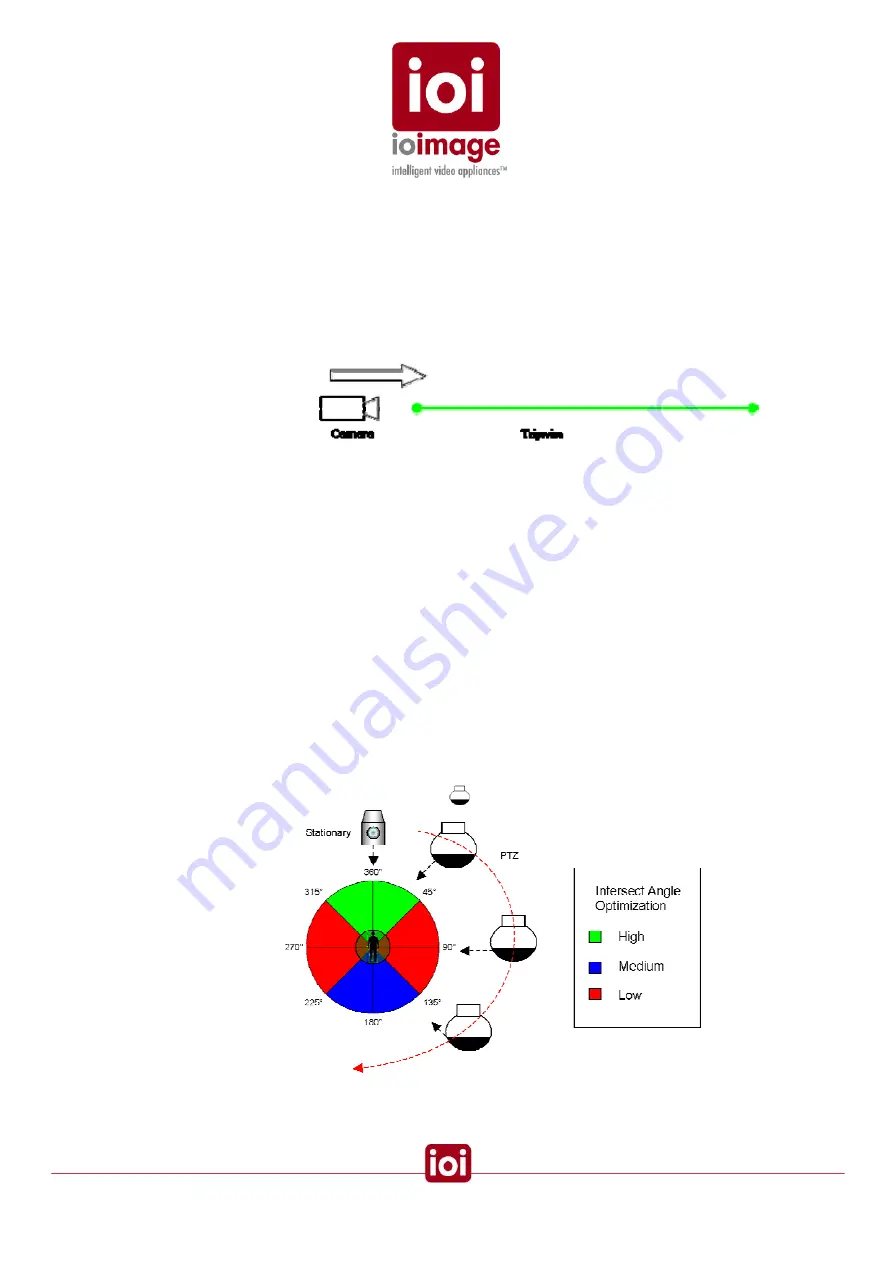
o
If using white or yellow lighting, use a LUX meter and measure the
lighting by facing the meter down. The reading for areas that will support
detection in white or yellow light cameras should read at 5lux or greater.
o
If using an infrared illuminator, check that the sensitivity of the camera
chip matches the illuminator specifications.
•
Camera
placement:
o
The tripwire functionality performs optimally when the camera is positioned to
point down the tripwire line of separation.
Overhead view of an optimal camera view down the line of a tripwire
o
When the PTZ synchronization is used, the PTZ camera must translate
the stationary cameras three-dimensional coordinates to its own preset
scene coordinated. In a previous paragraph the inherent effects of angle
and gauging distance was discussed. In a situation where the stationary
camera sends a less than precise depth coordinate, most often
synchronization can overcome errors using the other two coordinates. If
however, the PTZ camera is at a near 90 intersect with a stationary
camera the margin of error in distance coordinate becomes more
pronounced as individual pixels can translate into several meters on the
horizontal pan of the PTZ.
For planning the intersection angles of a PTZ and stationary camera, the
following guides for understanding the level of accuracy on a PTZ handoff
at the different PTZ to stationary intersect angles (horizontal) for different
visual & camera angles (vertical) on a stationary camera:
For a stationary camera with a low camera angle or visual angle (vertical)
the following shows the advantages and disadvantages of intersecting
between a PTZ camera (
) and a stationary camera:
54




























